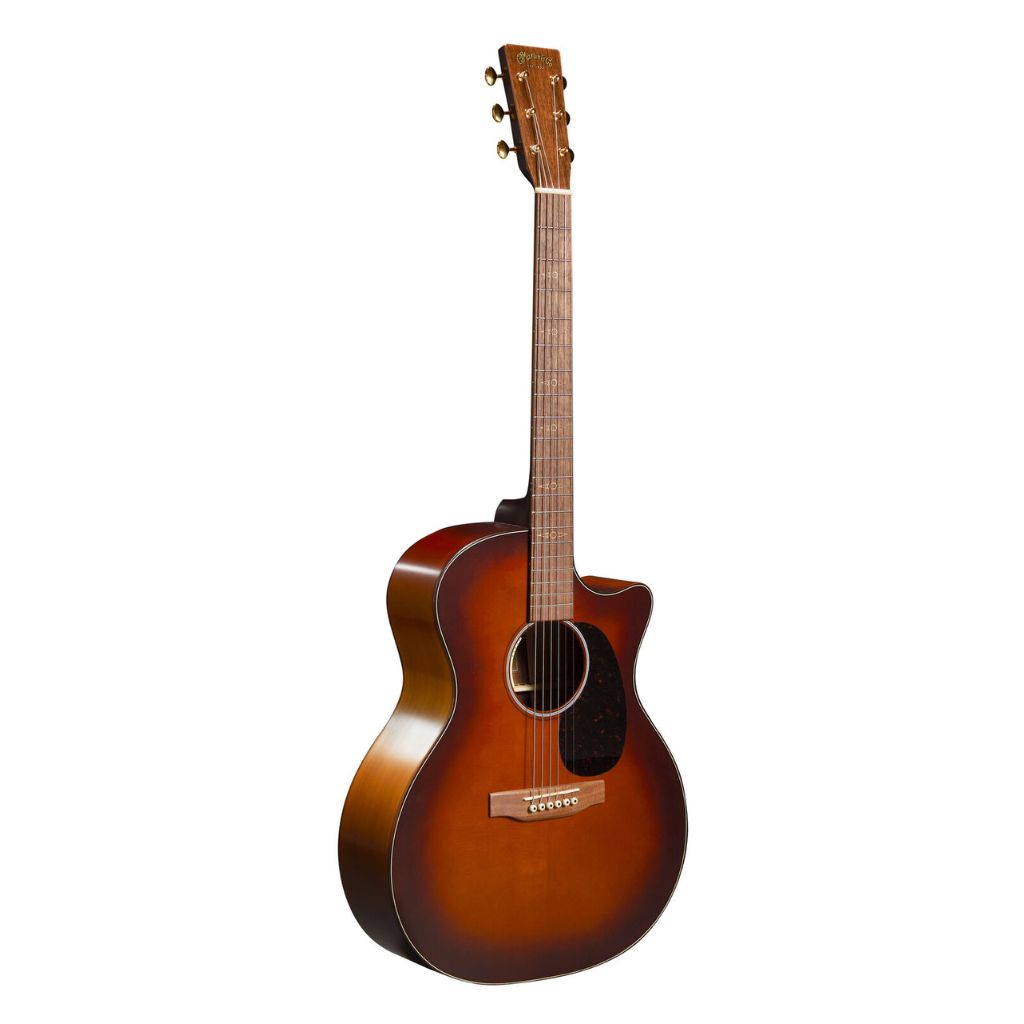Related Tags
Why the Martin GPCE Inception Maple shows that America’s oldest guitar brand is still a hotbed of innovation
The new instrument’s use of sustainable and domestic tonewoods required a huge shift from Martin’s R&D team to ensure it still had the sound and feel of a Martin guitar.
Ad feature with Martin Guitar
The Martin GPCE Inception Maple might be the legendary guitar brand’s most important guitar of recent years. Most notably, this is because of the guitar’s use of exclusively sustainable and domestic tonewoods in its construction, which shows that the iconic Martin recipe can still be found without having to rely on traditional tropical hardwoods that are harder to source and more time-consuming and challenging to replenish.
The classic guitars we know and love aren’t going anywhere of course – there’s still plenty of great classic wood out there – but a company as big and as prestigious as Martin needs to be thinking about the long game, and that’s exactly what the GPCE Inception Maple represents.
However, as Martin has discovered, it’s not just as simple as simply swapping rosewood and spruce for maple and walnut and sending a guitar to market. The GPCE Inception Maple, and the new materials used, required some of the most intense and involved guitar innovation the company has ever had to do to ensure that these woods would still combine in a way that Martin players would find inspirational. Let’s look at the three most important innovations:
Skeletonized Bracing

Peek under that hood and you’ll see the Inception’s bracing looks very little like the design company founder Christian Frederick Martin drew up back in the 19th century, but it’s not just there to look pretty.
“The first thing you’re going to notice is the weight-relief bracing,” says Fred Greene, Martin’s Vice President Of Product Management. “We have not used this style of bracing before. I won’t say we’re the first to put holes in braces but we think our approach is a little different.”
It certainly is. Each FSC-certified European spruce brace is run through with scores of neatly cut hexagonal holes, which not-coincidentally also form an X, in a nod to Martin’s most famous invention, bracing fans.
Each hole is cut with a laser and is designed to ensure that the guitar maintains its structural integrity while reducing weight and allowing the top to vibrate more freely, giving the guitar more overall resonance.
Sonic Channels

Another innovation to debut on the GPCE Inception Maple are what Martin calls, Sonic Channels. According to Martin, these precision-routed grooves go around each brace and lightens the overall structure of the guitar without impacting stability and improving the overall resonance of the maple top.
The Sonic Channels and Skeletonized Bracing work together to improve the sustain and amplitude of the Inception – generally when you increase one you lose the other, but by combining the two Martin found that
“The R&D department had been experimenting with some of these components and ideas previous to this design,” says technician Josh Parker. “But when we were tasked with making a guitar using domestic hardwoods, we found that it was perfect to marry the two concepts.”
The Walnut Wedge

The use of a three-piece back is an iconic and storied part of Martin guitar design, and one that the GPCE Inception Maple continues – albeit with a notable twist. In a modern flourish, the guitar features a curved back wedge of walnut.
However, while the unconventional shape of the wedge is a fun aesthetic choice, the purpose of the wedge itself is vital to the guitar’s overall sound.
“The back wedge was developed with the position of the bridge on the top in mind,” says Martin’s Tim Teel. “If you look through the guitar and go to the back, the widest part of the wedge is located where the bridge is, because the back reflects the energy that the top produces. In that area, walnut was chosen because it’s a softer wood and has a little more bass response, which helps balance out the harshness of the maple.”

It’s the fusion of these three new innovations that makes the GPCE Inception Maple, creating a guitar that still retains the character and quality that Martin fans love, but with its own unique twist that offers something a little bit different.
“We offer a lot of variety in terms of the models we provide, and so this isn’t a switch from one thing to another, right?” explains Martin’s CEO Thomas Ripsam. “It’s actually just expanding what we’re doing, but with a good, responsible purpose behind it. So I think it’s a good story. And this is the beginning of a line of more of these types of guitars. That doesn’t take away from anything – people still can get their standard models, but I think this just adds to the palette.”
And with the GPCE Inception Maple, there’s little doubt that the Martin palette will continue to be varied and inspirational for years to come.

